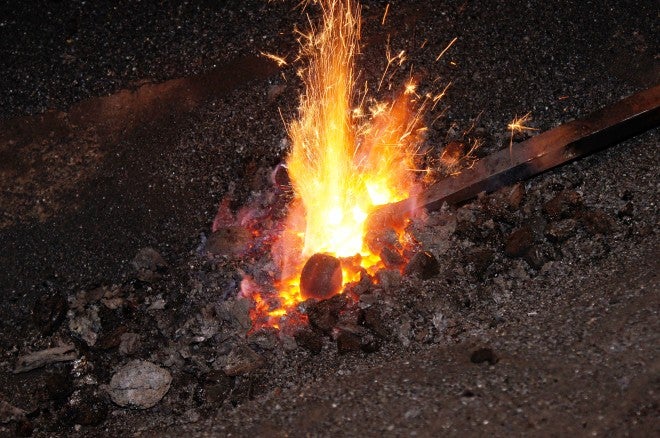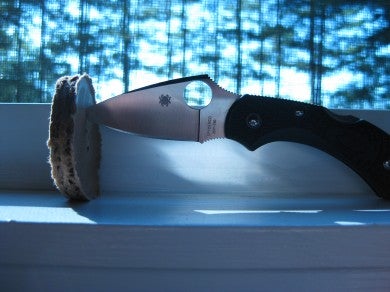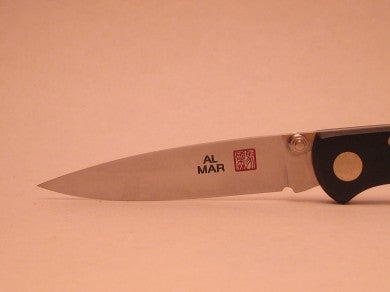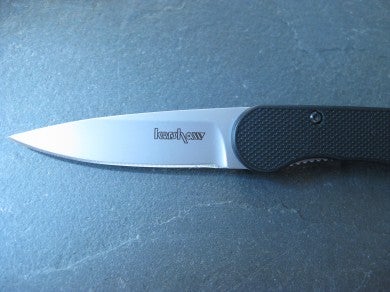Blade steel: ten things you need to know
Tony Sculimbrene 06.24.13

Blade steel is the heart of any good knife, and yet for a lot of folks, wading in to metallurgy is not a fun or profitable venture. For steel junkies, blade steel is the very reason to buy a knife, but for the rest of us, it’s all just an alphabet soup of terms. What do you really need to know? Here are the ten most important facts:
1. There is no BEST blade steel
A knife is a tool. It is designed with a specific set of functions in mind. Steel is the heart of a knife, and it, too, is chosen with certain functions in mind. As such, there is no “best steel.” Asking what is “the best steel” is like asking what is the best medication–you need to know what you’re doing with it first. For example, a big chopping fixed blade, one that can withstand the heavy blows that come with clearing brush or cutting bone, will freckle faster than a red head on a sunny day, but the new ultra stainless steels can’t hold an edge very much at all by comparison. To figure out what is the “best” steel you first need to figure out what you are going to do with it. Is it an EDC blade? A chopper? Is it something you use in and around water? Each of these uses calls for a different steel. For an EDC blade I really like ZDP-189.
This steel is very hard and very stain-resistant. Because of its high hardness (64-66 on the C scale Rockwell scale, noted as “64-66 HRc”) it chips like ice, but I rarely do impact cutting with my EDC knife, so that flaw is never really exposed. For chopping, gimme good ole fashioned 1095. I especially like the Rowan heat treated version used on ESEE knives. That stuff ROCKS. Both of these would stink near water. For aquamarine applications, look to H1. Steel is a tool and different tasks call for different tools.
2. We don’t get all of the information we need from steel companies and knife makers
The people who sell us knife steel know so much more than we do. They know the precise recipes. They have great data on cutting performance, from things like the CATRA machine. They know exactly what happens in the heat treat process. As consumers, we are really in the dark. I know that a lot of this, especially the heat treat process, has to be kept secret (trade secrets are only recognized in a court to the extent they protected by their holder), but some of it doesn’t. The TCC numbers from the CATRA test, for example, would tell us volumes about how wear-resistant an edge is, and yet they are kept secret for no real reason. Imagine buying a car if Ford refused to tell you the gas mileage. That is exactly where we are when it comes to data on steels.
3. Heat treat REALLY matters
In reviewing knives for more than two years now I have kept good records on cutting performance, and time and again I have noticed that certain blades outperform other blades of the same steel. Heat treat has a lot to do with that.
Heat treating is the process whereby the steel’s temperature is systematically controlled to even out the micro-structures in the steel that allow for good cutting performance. Instead of cooling down naturally, which would cause these micro-structures to separate or be unhelpfully distributed, heat treating helps make things more consistent, improving cutting performance.
So a blade’s heat treat matters a great deal, and it can make an inexpensive steel perform like one costing much more. For example, Paul Bos treated steel performs very well. His S30V heat treat makes the steel perform significantly better than other S30V steel. Similarly, Rowan’s 1095 is amazing. We don’t really know why or how this happens, again because this is secret kept by knife and steel companies, but we do know it matters. Don’t think it really does? Tell that to the collector or user that has sworn by Dozier’s special heat treated D2 for decades. You know, the same special heat treated D2 that performs like today’s ultra steels costing three times as much.
4. Blade geometry REALLY matters
So you’ve figured out that you want an ultra-hard steel like M390 or M4. Great. It will cut forever. But then you drop the angle on the cutting bevel to 40 degrees. Awesome. You have a 65 MPH governor on your Bugatti Veyron. Hard steels allow you to increase the cutting angle to a much higher level, making the cutting edge much keener and sharper. Not taking advantage of ultra-hard steels in this way is throwing away money. They can take the 30 degree or even 25 degree angle. Slap one on them and see just what a lightsaber can really do. Even if you don’t have a high-end steel, blade geometry really makes a difference. The thin, full flat ground blade on the Al Mar Knives Ultralight is made of AUS 8 but cuts like very few other knives because of the careful — almost obsessive — fastidiousness used in fashioning the grind.
Good grinds and simple geometries cut great almost regardless of steel.
5. Damascus steel isn’t worth the hassle (unless…)
The steel we call Damascus steel is not true Damascus steel. The stuff of legends required wootz, a material no longer available. This steel got is amazing properties from carbon nanotube structures and just recently, within the last 10 years, high tech labs have been able to recreate real Damascus steel. The stuff we currently call “Damascus” merely looks like Damascus steel. Generally, it is not stainless steel and the differences in metals makes rust a real issue. It also, to my eyes, very busy. It is opulent in the same way that Baroque architecture is opulent–it is overdone. But if you like its look, go ahead and try it out. There are stainless varieties now as well. If you can get around the rust issue AND you like the look, it might be worth the hassle, but for an EDC knife there are better, cheaper, and cleaner-looking options.
6. The Power of Three
You can’t always get want you want….
You can’t get a hard, tough-corrosion resistant steel. Being better in one of the three major attributes of a steel almost always comes at the expense of being worse in another. And if not, such as in the case of the non-steel blade material (that is a metal without iron) like Nitinol 60 aka SM100, be prepared to spend a mint. Its not even close to cheap. Life is full of tradeoffs, and steel selection is too. If you are careful and consider what you will be doing with your blade, you can work around a deficiency, as I do with using ZDP-189 in a no-chopping role as an EDC steel.
If you do that you just might get what you need…
7. Carbon isn’t all it used to be
200 hundred years ago steel without carbon would be like ice without H2O, but not anymore. We live in the Golden Age of gear, and we now have carbon-poor or almost carbon-free steels that are hardened through a mix of iron and nitrogen. This mix allows for high hardness still but greatly increases corrosion resistance. H1, from Spyderco, is virtually rust-proof. 14C28N from Sandvik is a great carbon-poor steel. And Elmax, well, it is a total beast. Carbon used to be the lynchpin for hardness and sharpness, but not anymore. This is a great time to be interested in gear.
8. Everyone needs a strop
You see these bonkers, ridiculous, and complicated sharpening routines on the internet. Six or seven steps, tons of gear, lots and lots of time. You don’t need that. Honestly, if you want to whittle hair, go for it, but if you want to use your knives for more than practicing your sharpening techniques, you can go with less maintenance. The Sharpmaker is a great starter kit, but even simpler is a strop–a piece of leather charged with stropping compound (usually some kind of grit). Get an old belt and some stropping compound and go to town. That will keep you in slicing shape for a long time. After that stops working, grab the Sharpmaker. If you want to go beyond that there is the Edge Pro and the Wicked Edge (I like the second better), but if you get to that point you may as well save some dough and try to teach yourself how to sharpen free hand on stones. A little maintenance goes a very long way.
9. Blade Sports provides us with good information
Do you know the real purpose behind auto racing (no, not the spectacular crashes)? It is to test car safety inventions. To that same end the real purpose of Blade Sports is to test cutlery. In a remarkable convergence all of the competitors in 2012 used the same two materials–M4 blade steel and horse mat material for handles. This ultra high level of cutting can give us useful information all the way down at the EDC level. M4 rocks. It is hard and it can be ground to an insane angle. And it is pretty tough. That is quite useful information. I check in once in a while to see how things are developing and it is always illuminating.
10. Not all finishes are created equal
Bo Randall was on to something. His super high polishes with their mirror like finishes weren’t just pretty (and boy are they pretty), they were actually much more stain resistant. By polishing stuff to a high shine, it closes the grains of the steel making, it harder for water and then rust to creep in. Conversely, bead blasting (like in the photo of the Kershaw knife below) opens up the steel and makes it much more rust prone.
It doesn’t matter so much with high end steels or nitrogen steels, but with stuff like 8Cr13MOV and AUS 8, the shinier the better.
If you want to learn more about steels, here is a three part series from my site (1, 2, and 3) with more information.


